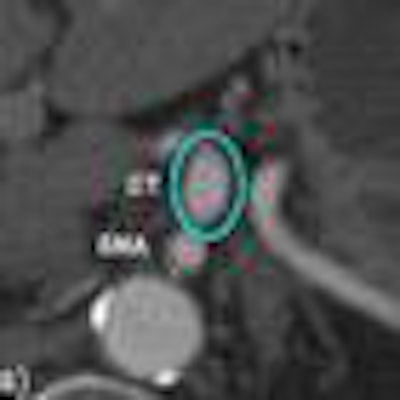
VIENNA - Can a hospital turn its critical after-hours emergency reads over to a teleradiology provider without putting patients at risk? It most likely can, according to a U.K. study of more than 1,000 patients, in results presented on Thursday at ECR 2013.
When mostly CT emergency images were outsourced to a teleradiology provider, the rate of serious missed interpretations was less than 1%. This was a little higher than the rate of the hospital's home team, but well short of published studies showing rates of missed findings at 1% to 2% or more, depending on the anatomic area and modality being studied.
"There are some similar studies to assess the quality of after-hours reports, and they are in the range of 1.6% of missed interpretations," said Dr. Joachim Hohmann from University Hospital Basel, who recently served as a consultant radiologist at University College Hospital London, where he led the study.
"If you are going to specialized studies like MRI of the brain, you have more misinterpretations [more than 7%] of initial reports, and especially in polytrauma studies you can have up to 24% of missed interpretations, so the rates we had were quite low," he said. The reporting time was fast, too, Hohmann added.
The study, designed to evaluate the quality of outsourced after-hours CT teleradiology reports, included 1,028 patients (437 women, 591 men; mean age, 51 years; range 0-97 years). The patients underwent emergency imaging during a five-month period at the hospital, which completed an average of 8.4 exams per night.
The referrals, from admissions or other departments, came in between 7 p.m. and 8 a.m. The most common exams were head CT (n = 473), followed by abdomen and pelvis (n = 362). There were also 155 chest, two orbital, 19 facial, eight neck, 54 spine, seven pelvis-only, and eight extremity exams, along with 11 angiograms, Hohmann said. There was an average of 1.4 exams per attendance.
 |
| Case missed by the teleradiology provider: an 80-year-old female patient with acute liver failure. The query was for hepatic artery thrombosis, infarction or acute renal failure, and the exam consisted of a four-phase liver CT. The previous exam showed a patent celiac trunk, but in the actual CT images the celiac trunk was thrombosed over a distance of about 3 cm. Images courtesy of Dr. Joachim Hohmann. |
The initial reports came from a teleradiology service provider with offices in the U.K. and Australia (Imaging Partners Online, now known in the U.K. as Radiology Reporting Online). All of the reporting radiologists for the teleradiology firm were accredited consultants with General Medical Council (GMC) specialist registration, Hohmann said.
"Between 7 p.m. and 9 p.m. the reports were done in the U.K., and between 9 p.m. and 8 a.m. the reports were done in Australia," he said. "The review was done routinely in the morning by the 'Acute Team,' which consisted of two consultant radiologists, one fellow, and two registrars."
Assessment of agreement of the Q Team with the original outsourced reports was made via a five-point scale:
- 5 = No disagreement
- 4 = Disagreement over style and/or presentation of the report, including failure to describe clinically insignificant features
- 3 = Clinical significance of disagreement is debatable or likelihood of harm is low
- 2 = Definite omission or interpretation of finding with strong likelihood of moderate morbidity but no threat to life
- 1 = Definite omission or misinterpretation with unequivocal potential for serious morbidity or threat to life
The results showed 13 cases of category 2 discrepancies and no cases of category 1.
"Luckily, we didn't have category 1, but we found some patients with category 2 -- a strong threat of morbidity but no threat to life," Hohmann said.
All patients with category 2 discrepancies were followed up for an additional six months, and according to those results, the teleradiology provider's reports were false in eight (0.8%) cases, including one intracerebral abscess, one new occipital infarction, two pulmonary emboli, one celiac axis thrombosis, one missed anastomotic leak, and one false appendicitis diagnosis in which pancreatitis was clearly visualized on the review.
For its part, the expert in-house panel misinterpreted findings in two (0.2%) cases, which consisted of one falsely diagnosed bilioma and one missed case of perforating appendicitis. An additional three cases remained unclear even after the six-month follow-up.
Similar studies show a rate of discrepancies for after-hours reports higher than that of the teleradiologists, with error rates for serious findings ranging from 1.6% to one-fourth of all findings for polytrauma. A study similar to this one found 37 (1.6%) significant discrepancies, which resulted in a change of management in 23 (1.0%) patients, he said. In a polytrauma study with 130 patients, there were 32 (24.6%) preliminary reports with discrepancies.
"The second point is that we had all reports within one hour, and this is an important point regarding emergency radiology," he said. "We had 0.8% of proven serious misinterpretations, and this is less or comparable to other studies with preliminary staff reports -- these results support the use of teleradiology reports, at least in terms of quality concerns."



















